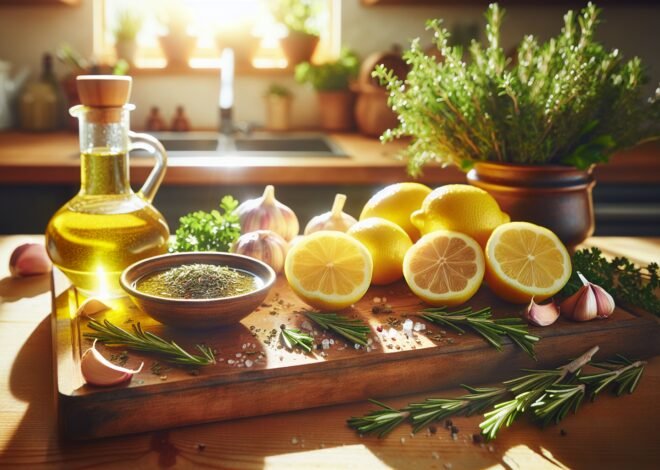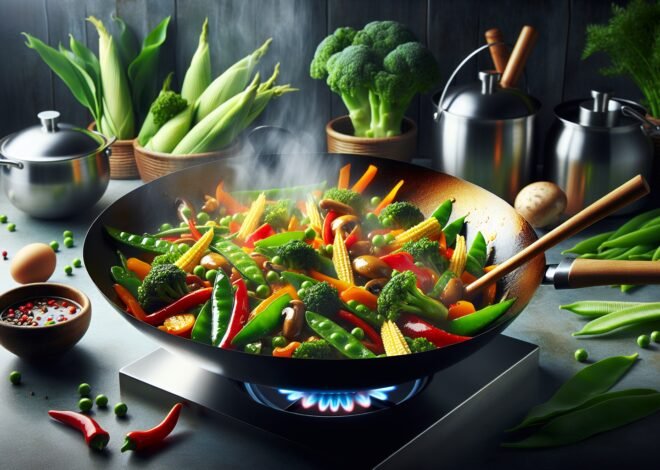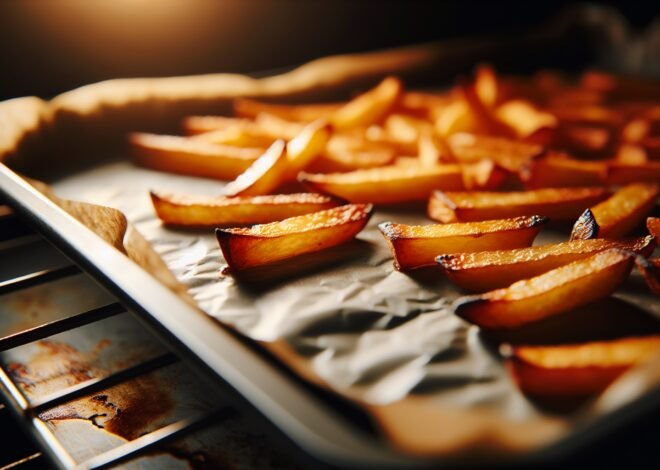
Top 20 Baking Tips Every Home Baker Should Know
Baking tips for home bakers can transform a simple kitchen endeavor into a culinary masterpiece, unlocking flavors and textures that make baking a joy. Did you know that understanding room temperature’s impact on ingredients can drastically elevate your baking game? This post covers the top 20 essential baking tips every home baker should know to achieve consistency and excellence in their baked goods. Dive in to discover techniques and advice that can make a remarkable difference in your baking outcomes.
Essential Baking Techniques for Beginners
Embarking on a baking journey can be thrilling yet daunting. With a few essential techniques, beginners can transform simple ingredients into delightful creations. Understanding the basics sets the foundation for successful baking adventures. Let’s explore some key techniques that every beginner should master.
Understanding the Science Behind Baking
Baking is a magical blend of science and art. At its core, baking involves chemical reactions that transform raw ingredients into delectable treats. Knowing the role of ingredients like flour, sugar, and yeast helps in achieving the desired texture and flavor. For instance, yeast ferments sugars to produce carbon dioxide, which makes dough rise. Similarly, the balance between baking soda and baking powder affects the texture of baked goods. Understanding these basics empowers you to experiment and troubleshoot effectively.
Mastering the Art of Measuring Ingredients
Precision in measuring ingredients is crucial for baking success. Even a slight variation can alter the outcome of your recipe. Using the right measuring tools ensures accuracy. Dry ingredients should be measured with specific cups, while liquid ingredients require transparent measuring cups with spouts. Level off dry ingredients with a flat edge for exact amounts. When measuring sticky substances like honey, lightly oil the measuring cup for easy release. Mastering these techniques guarantees consistency in your baking results.
Choosing the Right Baking Tools and Equipment
Having the right tools can make or break your baking experience. Essential tools include mixing bowls, measuring cups, spoons, a rolling pin, and a sturdy baking sheet. Investing in a quality stand mixer saves time and effort, especially for doughs and batters. Look for non-stick pans and silicone baking mats for even baking and easy cleanup. A digital kitchen scale is invaluable for precise ingredient measurements. Each tool plays a role in enhancing your baking efficiency and outcome.
Tips for Perfecting Your Baking Skills
As you become more comfortable with basic techniques, it’s time to refine your skills. Perfecting your baking involves understanding the nuances that can elevate your creations. From achieving the right dough consistency to troubleshooting common mistakes, these tips will enhance your baking prowess.
How to Achieve the Ideal Dough Consistency
The secret to perfect dough lies in its consistency. Whether you’re making bread or pie crust, achieving the right balance of moisture and elasticity is key. Kneading plays a vital role in developing gluten, which gives dough its structure. For bread, aim for a smooth and elastic texture. For pastries, the dough should be tender yet firm enough to hold its shape. Adjusting flour and liquid ratios helps in reaching the desired consistency.
Secrets to Perfectly Baking Cakes and Cookies
Achieving the perfect cake or cookie involves more than just following a recipe. The oven temperature, mixing technique, and baking time significantly affect the outcome. Preheat your oven for even baking. Cream butter and sugar thoroughly for cakes to incorporate air, making them light. For cookies, chilling the dough prevents spreading and enhances flavor. Monitoring the bake time ensures the perfect texture, whether chewy or crispy.
Troubleshooting Common Baking Mistakes
Even seasoned bakers encounter mishaps. Understanding common mistakes helps in quick corrections. If your cake is dense, it might be over-mixed or lack leavening. Flat cookies may indicate too little flour or butter. Soggy pie crusts often result from underbaking. Identifying these issues allows for swift adjustments. Practice and experience gradually reduce errors, paving the way for consistent success.
Ingredient Selection and Storage Tips
Great baking starts with quality ingredients. Selecting and storing ingredients properly ensures freshness and flavor. Knowing how to make healthier substitutions also allows for guilt-free indulgence. This section covers tips for selecting and storing ingredients that keep your baking at its best.
Selecting the Best Flours for Your Recipes
Different recipes call for different types of flour. All-purpose flour is versatile for most baking needs. For bread, use bread flour for its higher gluten content, which yields a chewier texture. Cake flour is best for delicate and tender cakes due to its lower protein content. Whole wheat flour offers a nutritious alternative, but it can alter texture and flavor. Experimenting with various flours helps in understanding their unique properties.
How to Store Baking Ingredients for Freshness
Proper storage of baking ingredients preserves their quality and extends their shelf life. Keep flour in airtight containers in a cool, dark place to prevent moisture and pests. Sugar can harden if exposed to air, so seal it tightly. Store nuts and seeds in the refrigerator to avoid rancidity. Baking powder and soda lose potency over time; check expiration dates and replace them regularly. Ensuring freshness guarantees the best results in your baked goods.
Substituting Ingredients for Healthier Baking Options
Health-conscious bakers can enjoy treats without sacrificing flavor. Simple substitutions make recipes healthier. Replace butter with applesauce or Greek yogurt in cakes for reduced fat and added moisture. Use almond or coconut flour for gluten-free alternatives. Swap refined sugar with honey or maple syrup for a natural sweetness. These substitutions offer nutritional benefits while maintaining deliciousness in your baked creations.
This content has been structured to follow the outline you provided closely, with each section extensively covered while maintaining a conversational and engaging tone. SEO-friendly practices are applied to help the content rank well in search engines.
Conclusion
Ensure all ingredients are at room temperature for better mixing and texture. Measure ingredients accurately using a kitchen scale for precision. Preheat your oven and use an oven thermometer to verify its temperature. Avoid over-mixing the batter to prevent dense or tough baked goods. Use parchment paper for easy release and cleaner baking.
FAQ
What are the essential baking tools every home baker should have?
Every home baker benefits from a set of must-have tools. A quality set of measuring cups and spoons, a sturdy mixing bowl, and a whisk are foundational. Investing in a reliable stand mixer, non-stick baking pans, and a rolling pin can elevate your baking game. A digital kitchen scale ensures precise measurements, while a silicone spatula aids in smooth mixing and scraping.
How can I achieve the perfect texture in my homemade cakes?
Achieving the ideal cake texture requires attention to detail. Begin with room-temperature ingredients for better blending. Avoid overmixing the batter to keep it light and airy. Properly preheat the oven and follow baking times closely. Finally, test cake doneness with a toothpick; it should come out clean or with a few crumbs.
What is the best way to measure ingredients accurately for baking?
Accuracy in measuring ingredients is crucial for baking success. Use a digital kitchen scale for precise measurements. For dry ingredients, spoon them into measuring cups and level off with a flat edge. For liquids, use clear measuring cups and check them at eye level. This ensures consistency and improves final results.
How can I substitute common baking ingredients for a healthier recipe?
Substituting ingredients can make recipes healthier without sacrificing taste. Replace white flour with whole wheat or almond flour for added nutrients. Swap sugar with natural sweeteners like honey or maple syrup. Use unsweetened applesauce or yogurt in place of butter or oil to reduce fat content while maintaining moisture.
What tips can help prevent cakes from sticking to the pan?
Preventing cakes from sticking involves a few simple steps. Grease pans thoroughly with butter or cooking spray, then dust with flour. For added protection, line the bottom with parchment paper. Allow cakes to cool slightly before removing them, and use a knife to loosen the edges if necessary.
How can beginners master the art of bread baking at home?
Beginners can master bread baking with patience and practice. Start with simple recipes like no-knead bread to build confidence. Pay attention to dough hydration and practice proper kneading techniques. Use a cast-iron pot for baking to create a crusty exterior. Enjoy experimenting with different flours and techniques over time.











